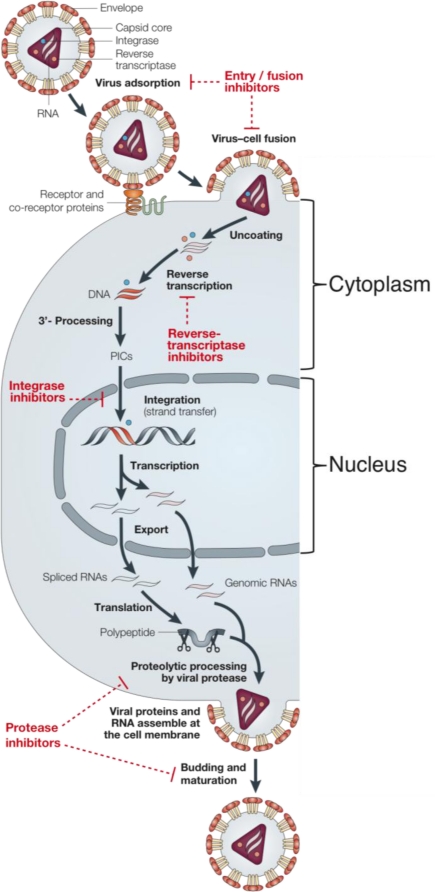Figure 1.
HIV-1 life cycle. HIV-1 first binds cells via interactions between the viral glycoproteins gp120/gp41 and the cellular receptor CD4 and CCR5 or CXCR4 co-receptors. After a conformational change of the complex, gp41 allows the fusion of both viral and cellular membranes, leading to the release within the cytoplasm of the viral core. The viral RNA (two copies of single-stranded RNA) is reverse-transcribed by the viral reverse transcriptase (RT) into double-stranded DNA. This DNA is then processed by the viral integrase (IN) and organized within a large nucleoprotein complex, the pre-integration complex (PIC). Following nuclear translocation, IN catalyzes the integration of this same DNA within the host genome (strand transfer, ST). After transcription, the viral RNA can be exported as genomic RNA (non-spliced) or as mRNAs (spliced RNA). The spliced RNA is translated into viral polyproteins that are cleaved by the viral protease (PR) and associate with genomic RNA at the cell membrane. Maturation by PR leads to new infectious particles released from the infected cell by budding. Drug targets include four different steps of viral replication: entry/fusion, reverse transcription, integration, and maturation (red). (Adapted from [3]).

